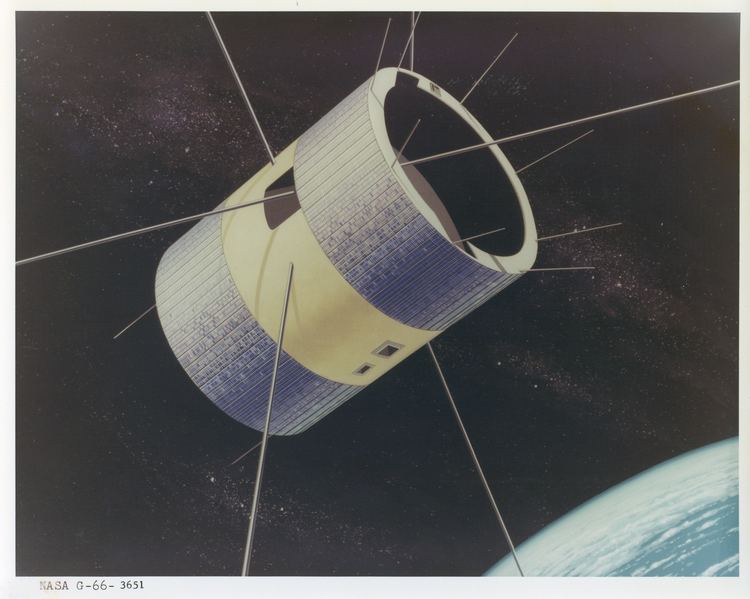COSPAR ID 1966-110A Mission duration 17 years Launch date 7 December 1966 Launch mass 352 kg Rocket Atlas-Agena | SATCAT no. 02608 Bus HS-306 Period 24 hours Launch mass 352 kg | |
 | ||
Similar ATS‑2, ATS‑3, ATS‑4, ATS‑6, TIROS‑1 | ||
ATS-1 (Applications Technology Satellite) was the first experimental equatorial synchronous satellite. Though intended as a communications satellite rather than as a weather satellite, it carried the Spin Scan Cloud Camera developed by Verner E. Suomi and Robert Parent at the University of Wisconsin. After entering a geostationary orbit at 23,000 mi (37,000 km) above Earth, initially in orbit over Ecuador, it transmitted weather images from the Western Hemisphere, as well as other data, to ground stations, including well as video feeds for television broadcasting. "For the first time," historians would note later, "rapid-imaging of nearly an entire hemisphere was possible. We could watch, fascinated, as storm systems developed and moved and were captured in a time series of images. Today such images are an indispensable part of weather analysis and forecasting."
Contents
It was the first satellite to use frequency-division multiple access which accepted multiple independent signals and downlinked them in a single carrier. The spacecraft measured 56 inches (1,400 mm) in diameter, 57 inches (1,400 mm) high and weighed 750 lb (340 kg).
The ATS-1 satellite was used during the 1967 international television broadcast Our World, providing a link between the United States and Australia during the program.
The ATS-1 would remain operational for more than 18 years, until April, 1985.
Features
This satellite was cylindrical, with a diameter of 142 cm (56 in) and a height of 135 cm (53 in); an additional 270 cm (110 in) in height was the engine cover. The surface was covered with solar panels, and the whole satellite was stabilized by rotation.
Instruments
A total of fifteen experiments were conducted during the mission:
